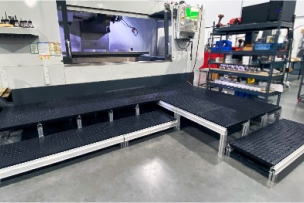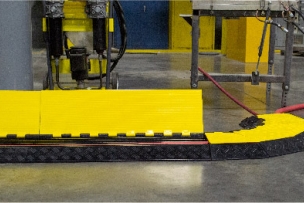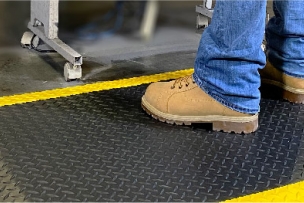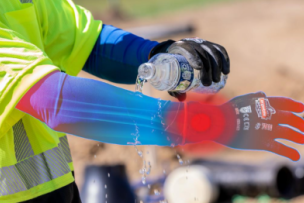It’s 5 a.m. somewhere... The alarm goes off, and an industrial athlete wakes to start another day of work. He is a standing worker in a manufacturing plant. He has been working in his job for several years. As he sits up and puts his feet on the floor, the familiar rush of pain ensues–feet, legs, back–the effects of long-term standing. He lays back down and picks up the phone ... “I won’t be coming into work today.”
Wikipedia identifies the complications and effects of long-term standing as “the conditions that may arise after prolonged time in a standing or upright position including standing, walking or running. Many of the complications come from prolonged standing (more than 60% of a work day) that is repeated several times a week.” There are many different jobs that require prolonged standing–retail staff, assembly line workers, hair stylists or laboratory technicians to name a few.
1. Varicose Veins
There are legitimate visible effects of long-term standing. Varicose veins, for example, are veins that have become enlarged and twisted, and visible especially within the legs, ankles and feet. When standing, gravity pulls the blood downwards, and the body has valves that assist in pumping blood upwards. As blood is circulating through the body, the valves prevent the blood from flowing backwards. Prolonged standing can cause these valves to weaken and eventually fail, allowing the blood to flow backward, causing pools. The veins then expand to accommodate. The valves of the veins work best in concert with accompanying muscles. When the muscle contracts, it helps to force the valve open and closed which in turn moves the blood up the leg. Prolonged standing where muscles are constantly strained weakens the muscle and results in less force of contractions. Varicose veins have been associated with chronic heart/circulatory disorders and hypertension.
2. Artery Disease
Other effects of long-term standing may not be quite as visible. Underlying to the circulatory system, carotid atherosclerosis (thickening of the major arteries in the body) can develop as it results in a change in the distribution of blood to the extremities. Along with blood pooling up, it also reduces the circulating of blood plasma volume. Atherosclerosis can lead to coronary or carotid artery disease, peripheral artery disease and aneurysms.
3. Joint Compression
Joint compression is a third effect that is related to long-term standing. Significant pressure on the hips, knees, ankles and feet reduces the normal cushioning, resulting in tears of the synovial joint. Plantar fasciitis is similar, as the plantar fascia is a flat ligament that connects your heel bone to your toes and supports the arch of your foot. Straining the ligament can cause tiny tears and it gets weak and swollen, causing the bottom of your foot to hurt when you stand or walk.
4. Musculoskeletal Disorders
The fourth effect and probably the most common is MSDs (musculoskeletal disorders). The Occupational Safety and Health Administration (OSHA) has stated that muscle fatigue and musculoskeletal disorders account for 34 percent of all worker injury and illness and is the reason for this opening scenario of the industrial athlete. MSDs are often painful and disabling. They can require months or even years of treatment and, in severe cases, permanent disability. Mostly they cause absenteeism and lost production in the workplace.
Industrial athletes: there are things you can do to prevent some of the devastating effects of long-term standing:
- Stay conscious of your working position.
- If feasible, change positions frequently.
- Footwear should ensure adequate arch and heel support.
If you are the employer of industrial athletes, look down. What type of floor is in the workplace? The type of flooring has an equally important influence. Hard, inflexible concrete is the worst surface for the standing worker. You may not be able to replace the concrete but you can install anti-fatigue mats with muscle pump theory or ergonomic tile flooring that provides some reflexibility. The use of anti-fatigue mats may not eliminate all of the effects of long-term standing, but combined with proper work design and footwear, it should improve the working conditions, especially because these types of products not only reduce fatigue but can improve safety by reducing slips and falls on slippery floors.
Wearwell can help you identify the best flooring for your workplace through their Free Site Survey.
Previously Featured on Wearwell's blog.
Shop MSCDirect.com for ergonomic flooring and matting surfaces from Wearwell to help protect the industrial athletes in your workplace.








Talk to Us!
Leave a reply
Your email address will not be published. Required fields are marked *